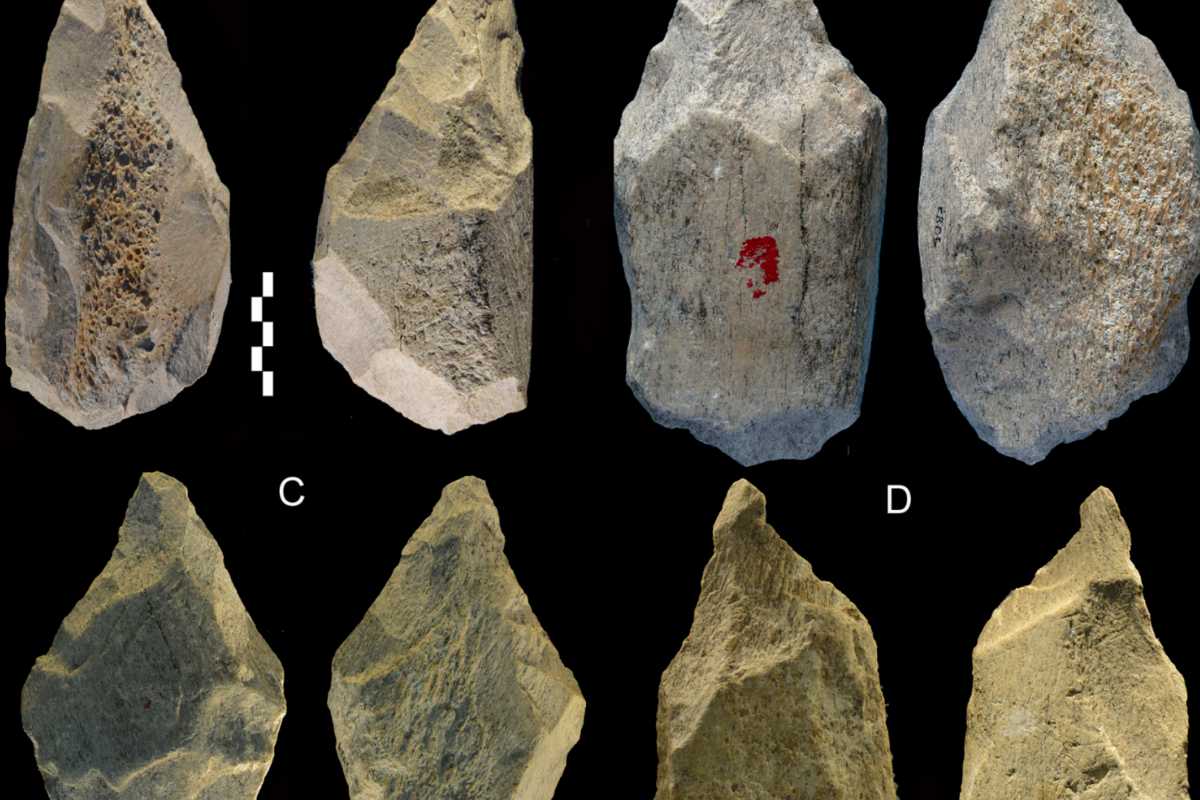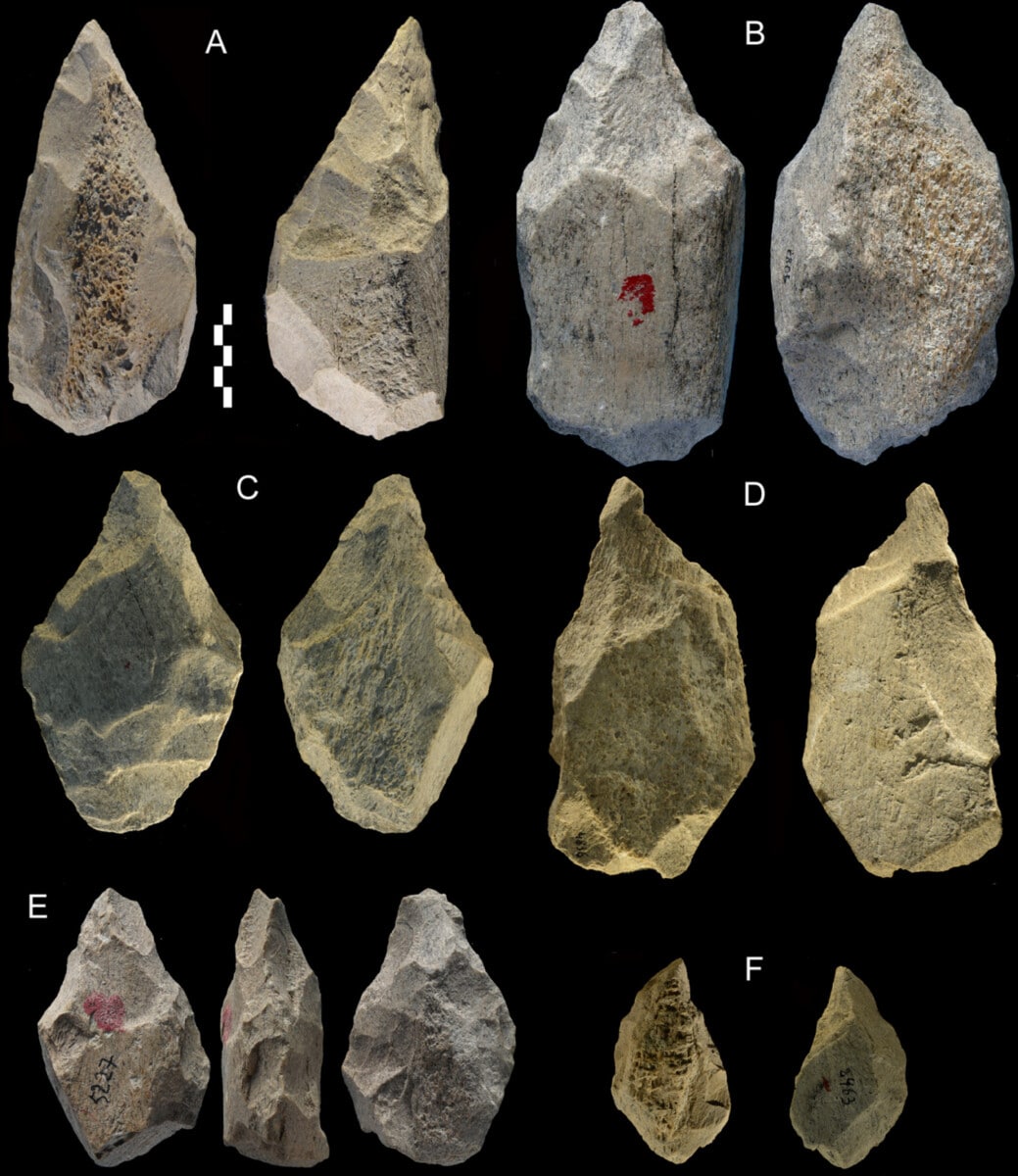
It concerns 98 different tools, including those made from elephant bones.
The ‘tools’ were excavated between 1979 and 1991 at a site referred to as Castel di Guido, not far from modern-day Rome. But only now have researchers extensively analyzed the tools. And that produces a number of surprises, according to the magazine PLoS ONE to read.
Standard approach
The bones are about 400,000 years old and most likely worked by Neanderthals. And they were way ahead of their time. For example, at Castel di Guido they not only produced a wide range of tools, but they also did so in a systematic way. “At Castel di Guido, humanoids broke the long bones of elephants in a standard way,” said researcher Paola Villa. It results in all comparable pieces of bone that are then processed into different tools. “It is an approach that only became commonplace much later.”

Several tools that have been found in Castel di Guido and are about 400,000 years old. Image: Villa et al. 2021, PLOS ONE.
Circumstances
It almost suggests that the Neanderthals who lived here 400,000 years ago were very special. That they were perhaps more intelligent or innovative than their contemporaries. But that is not the case, Villa thinks. The Neanderthals were nothing special. Their circumstances were special. They lived in an area where there were few large, loose stones and therefore no large stone tools could be made. They probably had a lot of dead elephants at their disposal. Now extinct forest elephants (Palaeoloxodon antiquus) gathered in large numbers near water streams in the habitat of the Neanderthals and probably died a natural death there as well. The Neanderthals could then slaughter them and appropriate the large bones. And with that, the Neanderthals were then able to make numerous tools. “In other places, hominids had enough bones to make a few tools, but not enough to produce them in a standardized and systematic way,” Villa said.
Toolbox
In total, researchers at Castel di Guido have discovered 98 bone-made tools. It is the largest ‘toolbox’ that we know of non-modern people to date. The toolbox houses a wide range of tools. For example, bones with sharp points have been found that may have been used to cut meat. Others are reminiscent of a wedge and may have been used to split bones. “First you make a notch where you can place this heavy tool, then you hit it and at some point the bone will break,” Villa explains.
Many of the tools are made from elephant bones. But there is also one made from an ox bone. And that is a special example, because it resembles a lissoir: a tool that was used to soften leather and was actually only used on a larger scale 300,000 years ago. “In other places, 400,000 years ago, people simply used the bone fragments that were available.” So again the circumstances – or more concretely: the available materials – seem to have enabled the Neanderthals in Castel di Guido to be somewhat ahead of their time.
Source material:
“Ancient humans turned elephant remains into a surprising array of bone tools– University of Colorado, Boulder
Image at the top of this article: Villa et al. 2021, PLOS ONE.